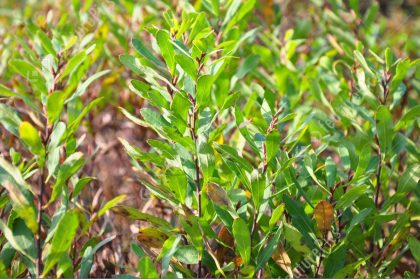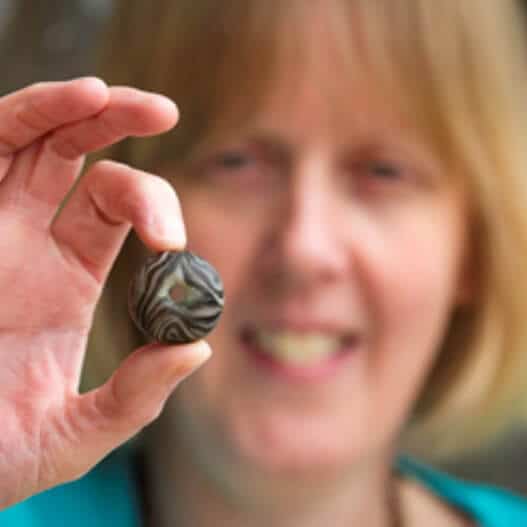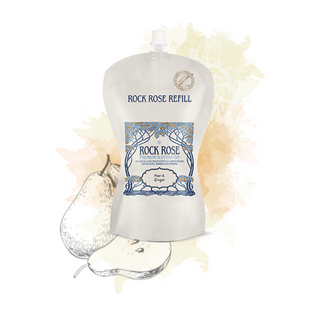This month’s beautiful botanical Bog myrtle (Myrica gale) gets its common name from the fact it occurs in dense clusters or thickets in areas of wet, boggy ground. This botanical grows throughout Western and Northern Europe and in North America. Bog myrtle which is also known as ‘Scotch Gale’ is a deciduous perennial shrub in the Myricaceae family. It can grow to over 150 centimetres tall, but seldom reaches that height in Scotland because of its palatability to large herbivores such as red deer (Cervus elaphus). The leaves of the botanical which emerge from their buds in May each year are dark green in colour with silvery undersides. There are separate male and female plants, which in April and May produce tiny flowers in cone-like catkins.
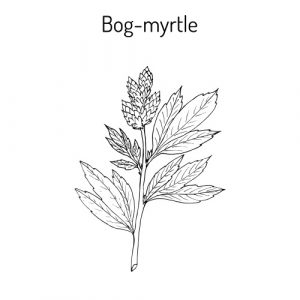
Queen Victoria was given a sprig of bog myrtle which she planted at Osborne House, her home on the Isle of Wight. This botanical was included in the wedding bouquet of Princess Victoria, the first child of Queen Victoria and her husband Prince Albert. Since then, bog myrtle from Osborne House, which is believed to bring luck and fidelity has featured in the bouquets of several generations of royal brides including Queen Elizabeth II; Diana, Princess of Wales; the Duchess of Cambridge, and most recently the Duchess of Sussex.
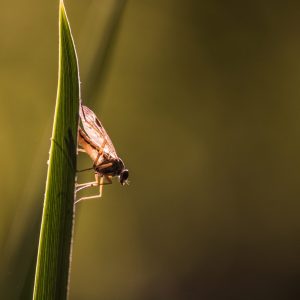
Bog myrtle supports almost 70 species of leaf-eating insects, and several mammals feed on this botanical, including feral goats (Capra hircus), the mountain hare (Lepus timidus), and domestic sheep (Ovis aries). In Scottish folklore bog myrtle has long been cited as an effective repellent against the Highland midge (Culicoides impunctatus). The smell of bog myrtle is distinctive, and anglers often wear a sprig of the botanical on their garments to keep midges away. Bog myrtle is also used as an insect repelling ingredient in some Highland-made soaps. However, the jury remains out regarding how effective bog myrtle really is as a midge repellent! According to Highland folklore wearing bog myrtle on clothing was also supposed to keep away the faerie folk.
In the past bog myrtle was used to keep cloth-eating insects away from household textiles and garments and in parts of the Highlands, bog myrtle leaves are still gathered and dried to scent fabrics and keep moths away from clothing. Sir William Jackson Hooker’s book Flora Scotica or, a description of Scottish Plants (1821), notes that when boiled in water, bog myrtle produces a waxy scum, which was used in the Highlands for small-scale candle-making for home use. Bog myrtle leaves were also used in the Highlands to produce a variety of different coloured dyes from yellow through to green. In traditional medicine, bog myrtle, was used as an abortifacient and as a cure for bronchial ailments, fever, liver problems and stomach aches.
In Scotland, bog myrtle was, and still is, used as a flavouring in soups and stews. The aromatic leaves of this botanical work particularly well as a seasoning for lamb and venison. Bog myrtle leaves can also be used to make tea. In Scotland in the 19th century, bog myrtle was used as a flavouring for beer, and this use has been revived in several modern craft beers. In gin production, bog myrtle adds a herbal flavour to the spirit and may if enough gin is consumed keep the midges at bay!


